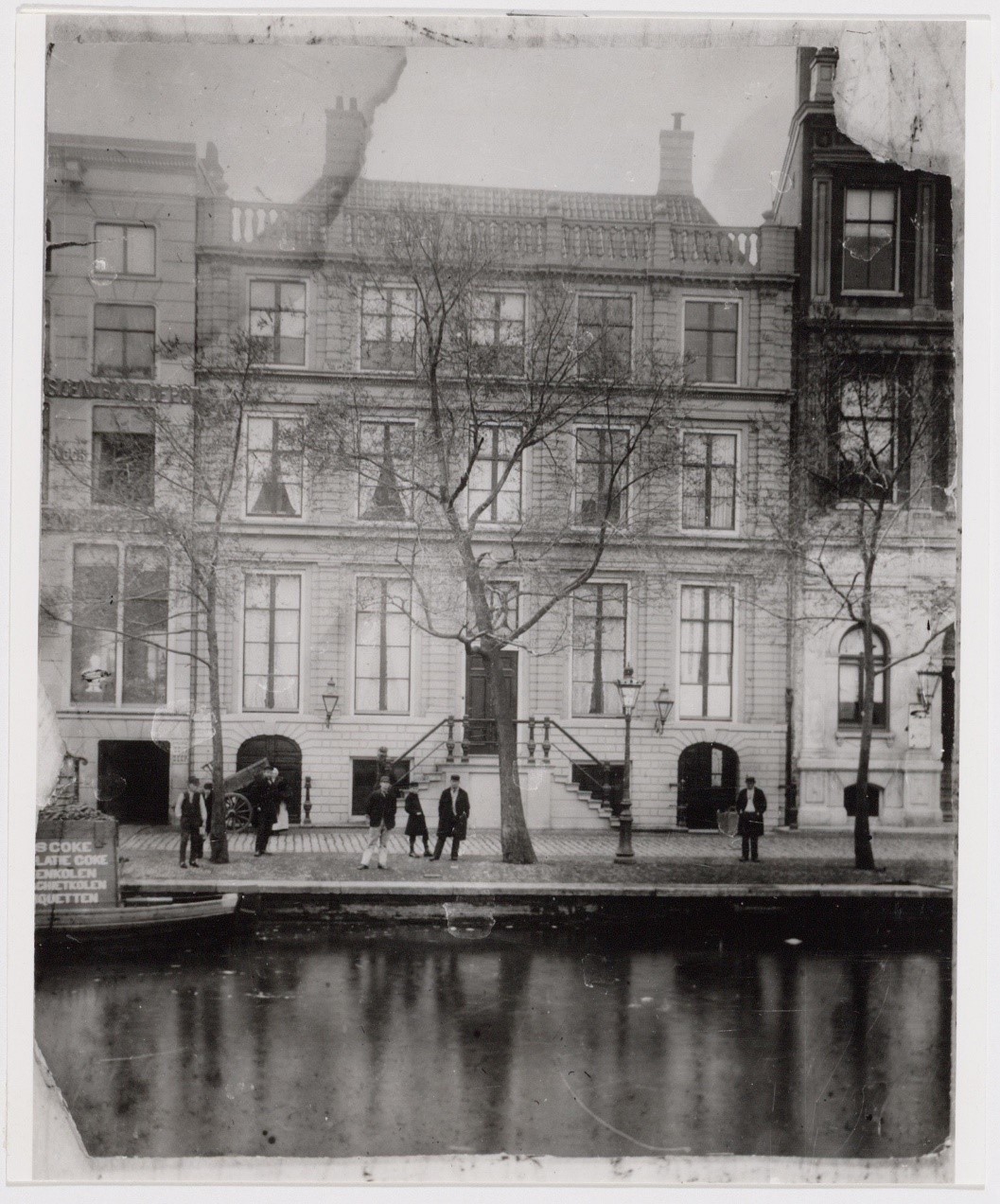
The vast majority of the Amsterdam Jews were poor. But, there were a few exceptions. Being wealthy also reflected in the education of the children of these families.
Anna Gratia Mariana (Netje) Asser (1807 – 1893) was the daughter of Tobias Asser (1783 – 1847) and Caroline Itzig (1786 – 1854). She grew up in an upper class Jewish household who lived in a canal house on Singel 548 in Amsterdam. The family was not very observant and the synagogue only came in the picture during a Brit Mila, a Choepa and a Lewaaje.[1]
In 1796 the Asser family had an important role in the founding of free-spirited kehilla of Adath Jessurun, a congregation related to Felix Libertate.[2] The grandfather of Netje, Moses Salomon Asser (1754 – 1826) was one of Felix Libertates’ leading figures.[3]
Netje Asser kept a diary and this became an important source in how the life of rich (Jewish) children was. Netje Asser began to write her diary in 1819 as an 11-years old girl and stopped in 1832. Netje writes about her education and schooling.[4]
Jewish education hardly seemed a focus for the education of Netje and her siblings received. Although the occupation of The Netherlands by France ended in 1813, Netje writes her diary in French and she is taught by several private teachers at home.
A few of the teachers were a Mrs. Cramer, who came from Switzerland.[5] She educates Netje in all subjects, and is seen as the thriving force for Netjes perfect French.[6] The education was segregated along gender-lines. Brother Eduard went to the school of Jean Etienne Mollet from Switzerland in Amsterdam.[7] Mollet was an acquaintance of grandfather Moses Salomon Asser, who was a board member of the ‘Nederlands Genootschap tot Zedelijke Verbetering der Gevangenen’ (Dutch Society for Moral Improvement for Prisoners) at the time when Mollet was the secretary of this organization.
Eduard finished this school when he was 12 years old, and subsequently went to the Latin School in Amsterdam. Besides the regular teachers the family employed a piano-teacher, the Jewish Mrs. Betje Godfried, and a violin-teacher, the Jewish Mr. Juda Jacob Hagenaar who taught Netjes brother Carel.[8] There is no mentioning of learning Hebrew, neither for Netje, nor for her brothers.
This all was during a later part of the education, the schooling started at the Bewaarschool (kindergarten) of Mrs. Rozart.[9] The Bewaarschool was a school for boys and girls with gender-mixed classes.
The picture that is painted by Netje about the Jewish upper-class is that the Jewish aspect of her family hardly plays any role in the education of the children. The family were foremost emancipated Dutch citizens who identified more with upper-class Dutch than lower-class Jews. On their turn, upper-class Dutch in this period of time identified with the French culture. The upper-class Jews were a very small part of the Jewish citizens of Amsterdam and it is very likely that education-wise most of them could tell a similar story. The children were educated outside any religion, although they were, according to the diary, appalled by converted Jews.[10]
[1] A circumcision, a marriage and a funeral.
[2] Dr. I. H. van Eeghen, De jeugd van Netje en Eduard Asser 1819 – 1833 (Amsterdam 1964), 46-47.
[3] ‘Felix Libertate’, website joodsecanon.nl. https://joodsecanon.nl/fzz/1795-Oprichting-Felix-Libertate-en-de-splitsing-tussen-de-Alte-en-Neie-Kille/, 27 juli 2020.
[4] Netje Assers diary was amended in 1964 by historian Isabella Henriëtte van Eeghen; Dr. I. H. van Eeghen, De jeugd van Netje en Eduard Asser 1819 – 1833 (Amsterdam 1964)
[5] Dr. I. H. van Eeghen, De jeugd van Netje en Eduard Asser 1819 – 1833 (Amsterdam 1964), 60.
[6] Dr. I. H. van Eeghen, De jeugd van Netje en Eduard Asser 1819 – 1833 (Amsterdam 1964), 61.
[7] Dr. I. H. van Eeghen, De jeugd van Netje en Eduard Asser 1819 – 1833 (Amsterdam 1964), 58.
[8] Dr. I. H. van Eeghen, De jeugd van Netje en Eduard Asser 1819 – 1833 (Amsterdam 1964), 54 – 55.
[9] Dr. I. H. van Eeghen, De jeugd van Netje en Eduard Asser 1819 – 1833 (Amsterdam 1964), 55.
[10] Dr. I. H. van Eeghen, De jeugd van Netje en Eduard Asser 1819 – 1833 (Amsterdam 1964), 50 – 51.
illustration:
collection STADSARCHIEF AMSTERDAM: photo-prints, 1890, SINGEL 548, the house of Eduard Isaac Asser, attorney and amateur photographer, OSIM00005003488
published:
3 July 2021
last amended:
3 juli 2021
